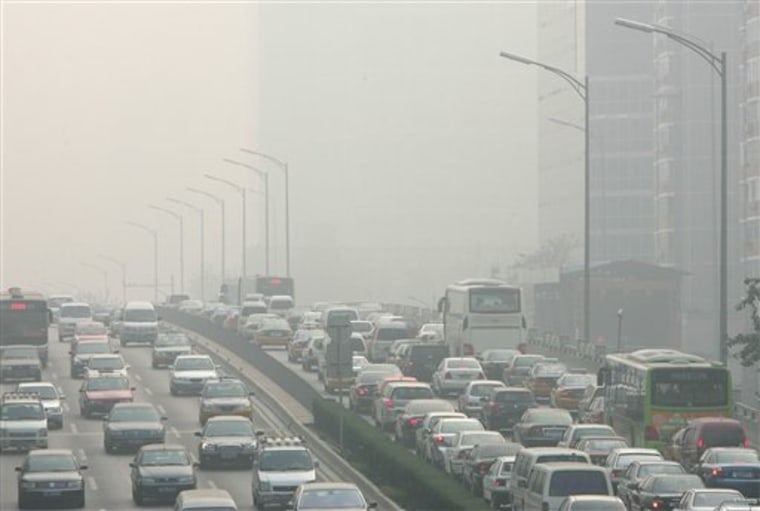Rapid economic growth in China and India will have devastating consequences for the world's energy supply if governments in those emerging countries do not ramp up efforts to curb demand and greenhouse gas emissions, the International Energy Agency said Wednesday.
The IEA said that the two countries will account for around 45 percent of the increase in global primary energy demand through 2030, when the world's energy needs are expected to be well over 50 percent higher than they are today.
"How China and India respond to the rising threats to their energy security will also affect the rest of the world," the Paris-based agency said in its 2007 World Energy Outlook, which concentrated on the implications of energy developments in those two emerging economies for the rest of the world.
The IEA — an energy policy adviser for its 26 member countries, including the United States, Canada, Australia and 19 European nations including Germany and Britain — said that China and India are transforming the global energy system by dint of their sheer size.
CO2 boom
China is expected to overtake the United States as the world's biggest emitter of carbon dioxide this year — that's three years earlier than the agency had forecast in its annual report last year. India will become the third-biggest emitter around 2015.
The United States did not ratify the U.N. Kyoto Protocol, which set an average target for countries to cut greenhouse gas emissions by 5 percent below 1990 levels by 2012. The pact did not set emissions targets for China and India.
IEA Executive Director Nobuo Tanaka said that rapid economic growth in China and India was a "legitimate aspiration" that would improve the quality of life of more than 2 billion people and that needed to be supported by the rest of the world.
"Indeed, most countries stand to benefit economically from China and India's economic development through international trade," Tanaka said ahead of the report's release in London.
However, the agency said that growing participation in international trade highlighted the importance of the pair's contribution to collective efforts to enhance global energy security.
'Radical shift' to cleaner energy
"We need to act now to bring about a radical shift in investment in favor of cleaner, more efficient and more secure energy technologies," Tanaka said.
The IEA also warned that an "abrupt escalation" in oil prices is possible before 2015 amid increased demand and shorter supply as oil output becomes more concentrated in a few Middle Eastern countries.
The agency said that crude oil import prices, a proxy for international oil prices, could rise to $108 in nominal terms by 2030 when it forecasts oil demand to have reached 116 million barrels per day. Oil demand was 84 million per day in 2006. On Wednesday, crude prices jumped to a new trading record above $98 a barrel.
"Although production capacity at new fields is expected to increase over the next five years, it is very uncertain whether it will be sufficient to compensate for the decline in output at existing fields and meet the projected increase in demand," the IEA said.
To maintain growth in production capacity, the oil industry needs to invest some $5.4 trillion between now and 2030, it said.
